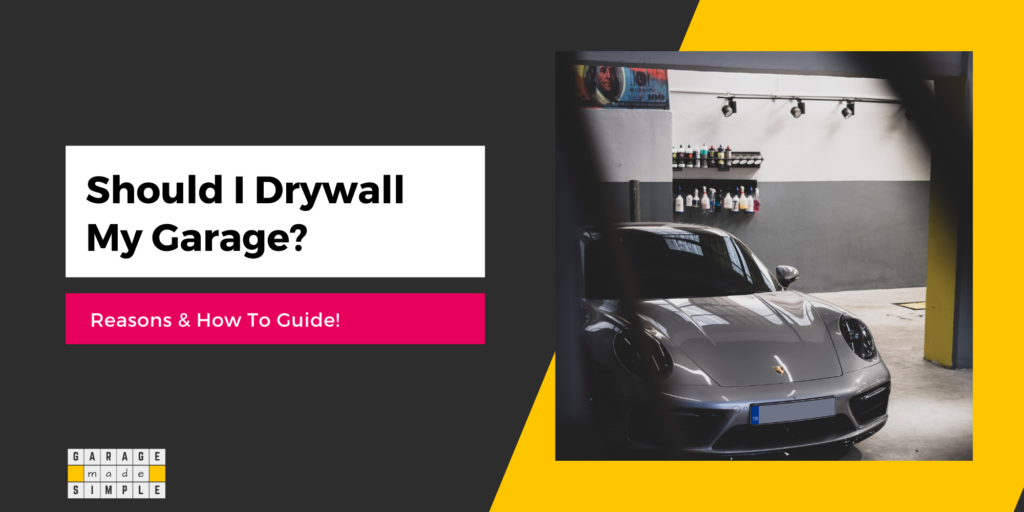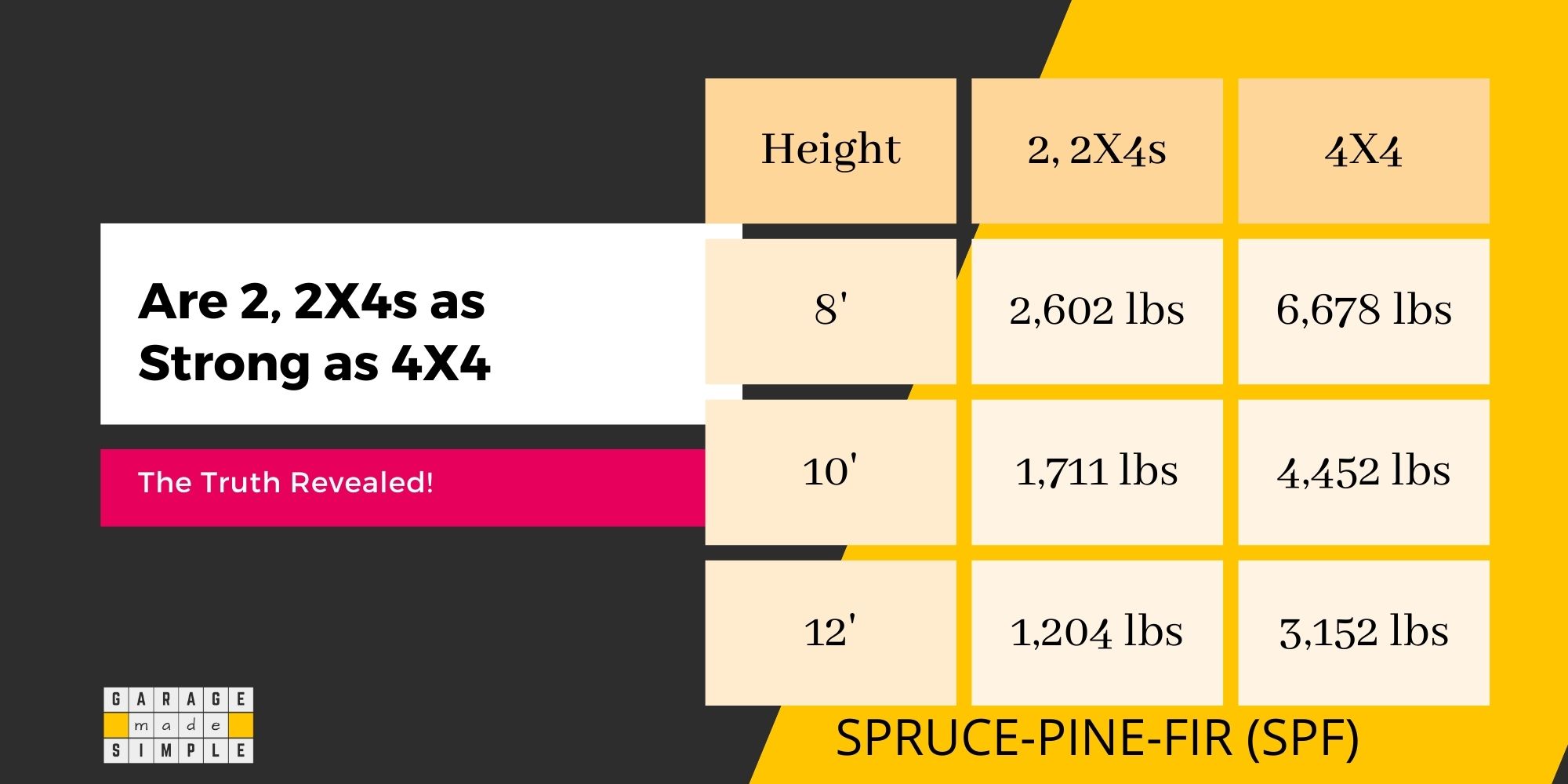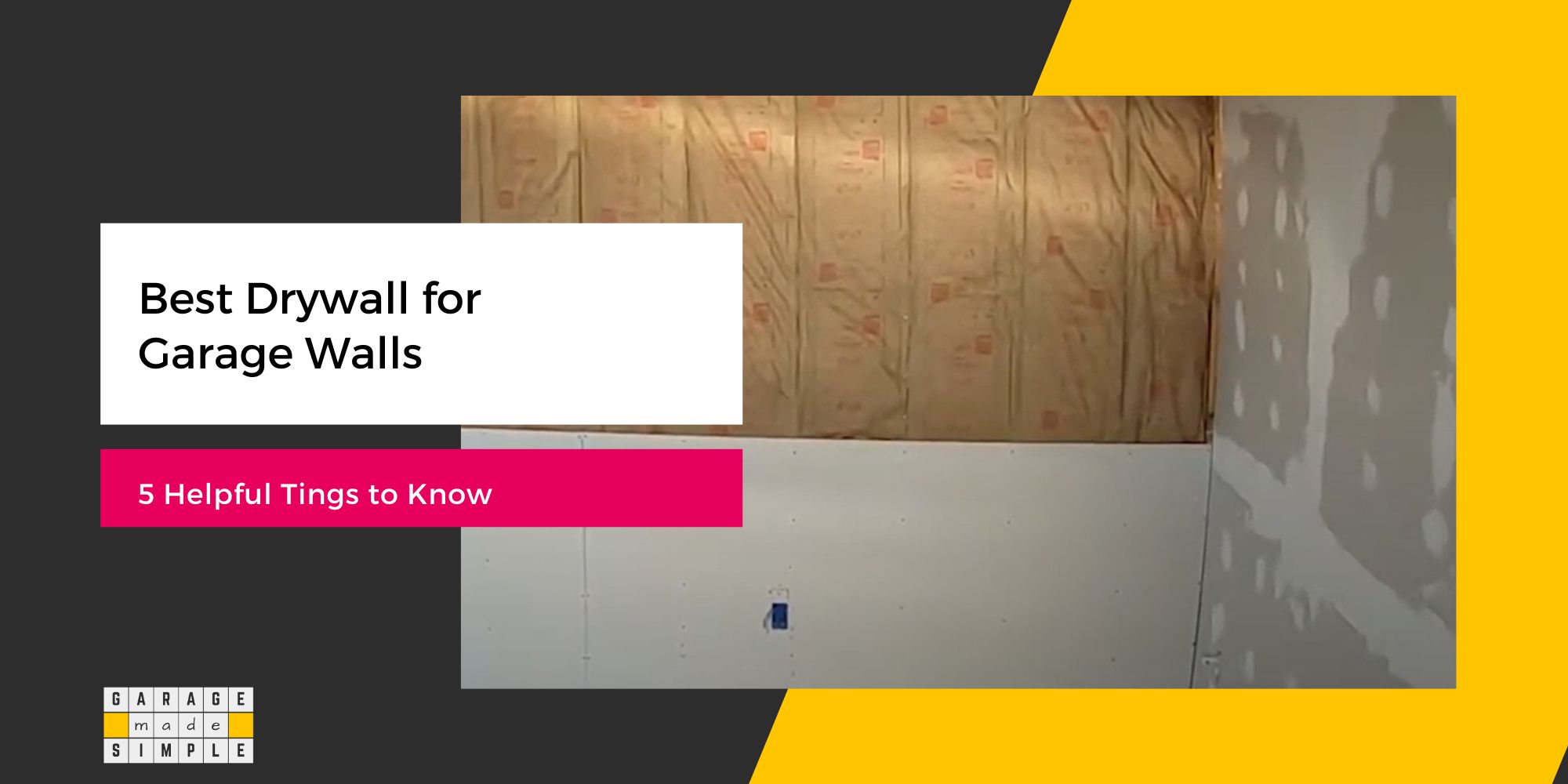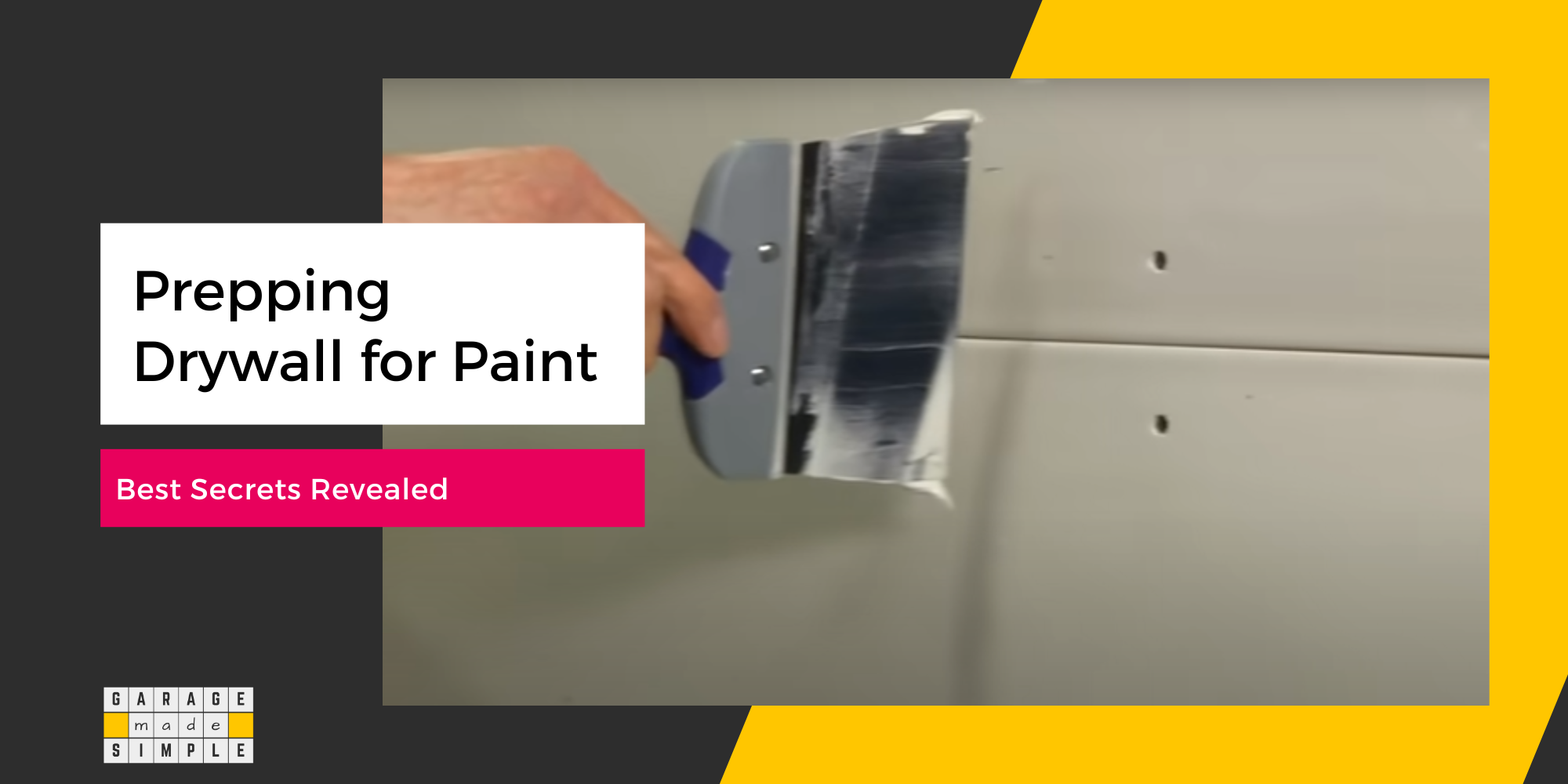Should I Drywall My Garage? (With Reasons & a Helpful Guide!)
garagemadesimple.com is a participant in the Amazon Services LLC Associates Program, an affiliate advertising program designed to provide a means for sites to earn advertising fees by advertising and linking to Amazon.com . The website is also an affiliate of a few other brands.
Should I Drywall My Garage?
Are you building a new garage? Maybe you’re considering renovating the existing one? Finishing the garage walls is important to make it look and feel comfortable. Don’t you want a garage where you could spend some time doing stuff you like? So, should you drywall your garage?
Absolutely Yes! Drywall is extremely popular for sheathing garage interior walls and ceilings. Drywall is lightweight, easy to install, and can be painted or finished to match the rest of your home.
Drywall is a panel made of gypsum plaster pressed between two thick sheets of paper. It is easy to cut and attach to the wood studs of a garage wall frame, using nails or screws.
The seams are covered with joint tape and joint compound (also known as “mud”) to create a smooth, seamless finish. Drywall can be painted or finished in a variety of ways, including with textured finishes, wallpaper, or paneling.

Why Drywall a Garage?
There are at least 10 reasons to drywall a detached garage but in my opinion there are 5 that make drywall the perfect choice for an attached garage.
1. Meets the Fire Code
Section R302.6 and Table R302.6 of The 2021 International Residential Code (IRC) requires that the wall adjoining living quarters or the ceiling of a garage that has living space above it must use gypsum board or an equivalent fire rated panel.
Use drywall in your attached garage and you do not have to worry about building codes, building inspectors and fire risks.
2. Most Budget Friendly
Drywall is the most budget friendly sheathing option for garage walls & ceilings. Based on estimates from Home Depot the material cost per 4’X8’ board of some of the common sheathing materials is as under:
| Material | Cost per sq. ft. |
| Drywall | $0.50 – $0.65 |
| Cement Board | $0.80 – $1.00 |
| OSB | $2.25 – $4.50 |
| Plywood | $2.50 – $5.00 |
NOTE: The prices are just estimates and may vary depending on the brand, quality, location and time of purchase. Do recheck with a local supplier or store.
3. Covers Up Utilities & Insulation
The frame of the garage wall is by nailing together studs. Insulation and utilities such as electrical wiring, cables, HVAC ducts, gas & water pipelines are installed within the garage wall stud cavity.
Drywall is an excellent way to cover up all this unsightly stuff. You can have access panels built into the drywall wall or ceiling, for maintenance & repair of the utilities. It is super convenient and looks good too!
4. Easy to Install
Hanging drywall is generally easier than hanging OSB or plywood, especially for beginners. Drywall can be easily cut to size using just a utility knife. You can attach the boards to the wall or ceiling using drywall screws.
Finishing drywall is labor intensive but not difficult. The seams need to be covered with joint tape & compound and sanded smooth before priming & painting.
There is a simple how-to guide in the next section.
5. Easy to Patch Up
Drywalls are not as sturdy as other alternatives such as Cement Boards, OSB and Plywood. They will get holes when a ladder or a sharp object hits them.
But no need to worry. Patching up a hole in a drywall is child’s play. Just watch this You Tube video:
How to Hang Drywall in Your Garage?
Hanging drywall in a garage is a relatively simple process, but it does require some basic DIY skills, right tools. If a family member or friend can help out, the job will be easier to finish.
The supplies required to hang drywall in a garage are, drywall panels, screws (or nails), joint tape, joint compound, sandpaper, primer and paint.
You will also need an utility knife, measuring tape, a level, putty knife, screw gun (or nail gun). You may also need a saw. In addition keep a ladder, drop cloths, protective eyewear and respiratory mask on hand.
Here are the steps for hanging drywall in a garage:
Measuring
Measure and mark the location of the drywall panels on the garage walls. Use a level to ensure that the panels are straight.
Cutting
Cut the drywall panels to size, if necessary. A drywall saw or utility knife can be used for this. Start fixing the panels from the top left hand or right hand corner of the wall.
Positioning
Position the drywall panels against the wall and attach them using drywall screws. Start at the top of the panel and work your way down, spacing the screws about 8 inches apart.
Finishing
Cover the seams between the panels with joint tape and joint compound. Use a putty knife to apply a thin layer of compound, then place the joint tape over the compound and smooth it down.
Sanding
Allow the compound to dry according to the manufacturer’s instructions, then sand the surface smooth.
Painting
Prime and paint the drywall, or apply a texture finish if desired.
How To Protect Drywall? (5 Pro Tips!)
For all the advantages of using drywall in your garage, you have to be aware that drywall does have 2 major weaknesses.
- Drywall has poor impact resistance. It will, sooner rather than later, get nicked or punctured. Any sharp object will easily scratch it. A hard blow may even make a hole in drywall.
- Drywall is porous & hygroscopic. So if your garage floor has water pooling near the walls, the drywall will absorb the water like a bath towel. The water will wick and spread making the drywall soggy. A wet drywall will promote the growth of mold & mildew.
It is best to protect the drywall in the garage from high humidity, water pooling and impacts. You can do this by:
- Installing Garage Wainscoting Panels: Use stainless steel or aluminum panels as they are both impact and corrosion resistant.
- Installing Garage Floor Trim: This is less effective than wainscoting panels but does give the garage a more homey look & feel.
- Waterproofing the Garage Floor: This will reduce the possibility of groundwater from seeping into your garage and making the drywall wet & soggy.
- Weather-sealing the Garage Door: This will prevent rainwater from the driveway from gushing into the garage and flooding the floor.
- Installing Garage Floor Drains: This will channel any water that pools on the garage floor from snow melt or car wash away from the drywall walls.
Thank you very much for reading the post. I do hope you found it informative and useful.






